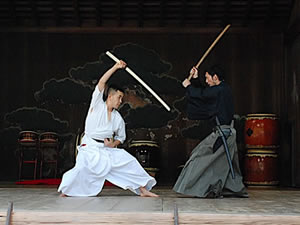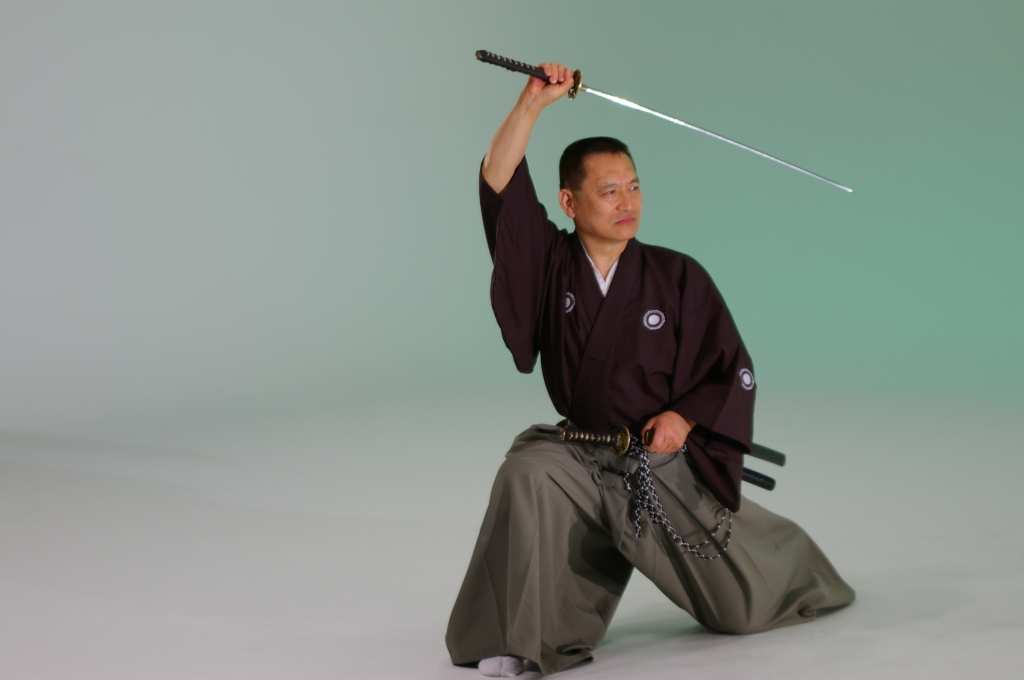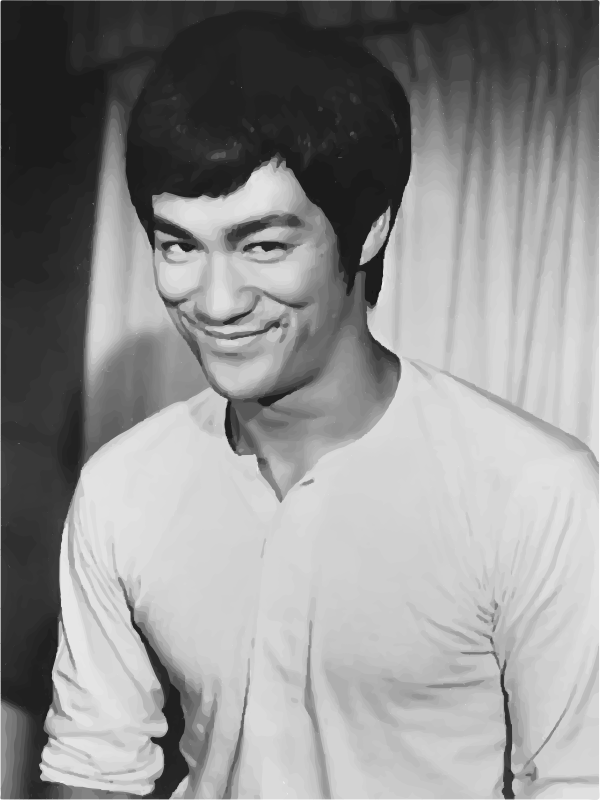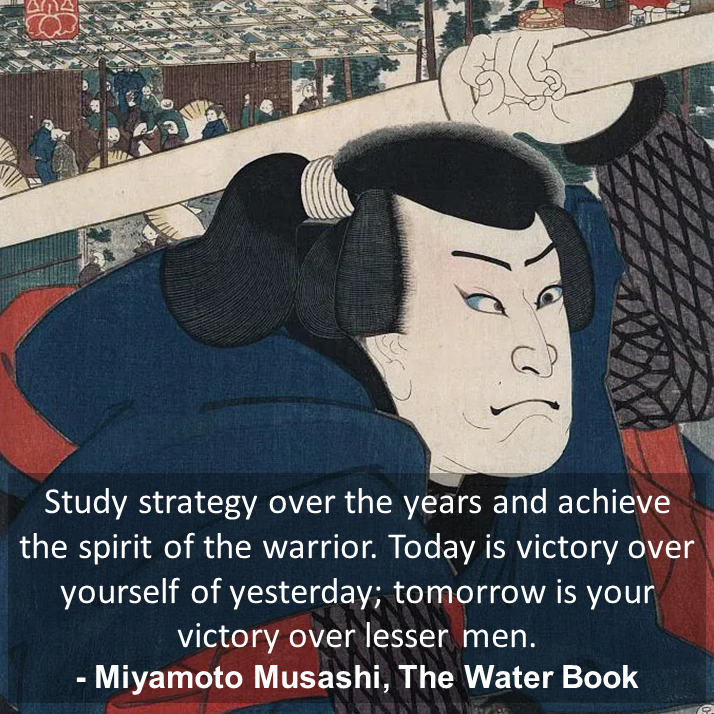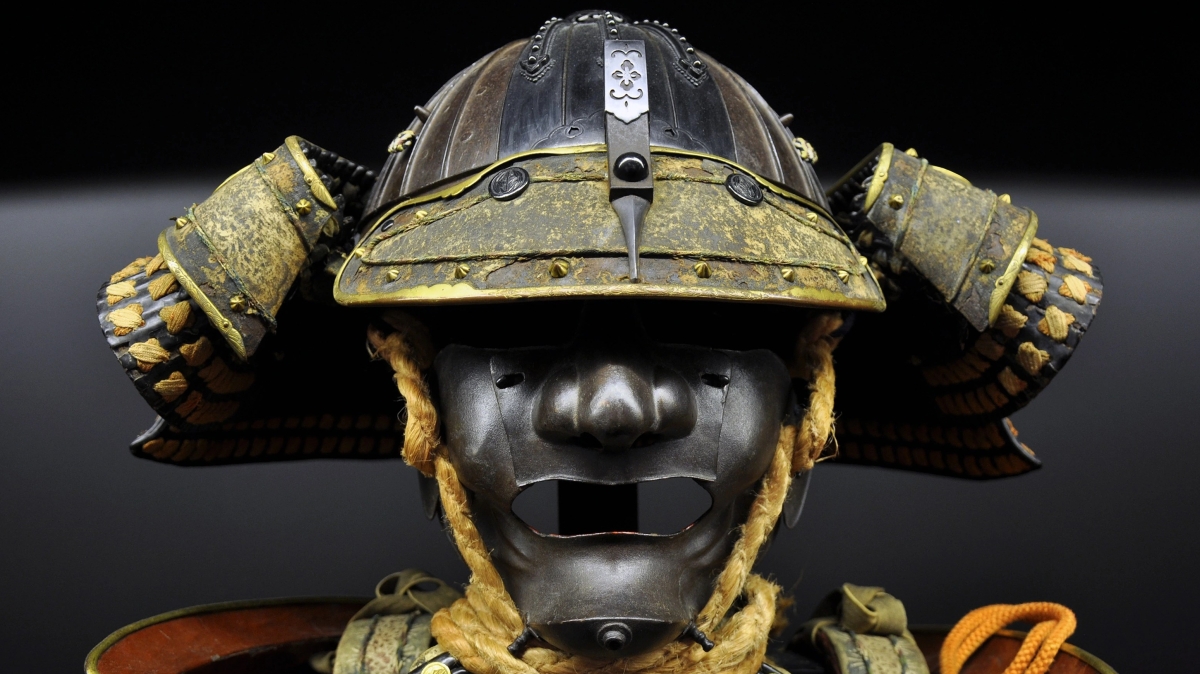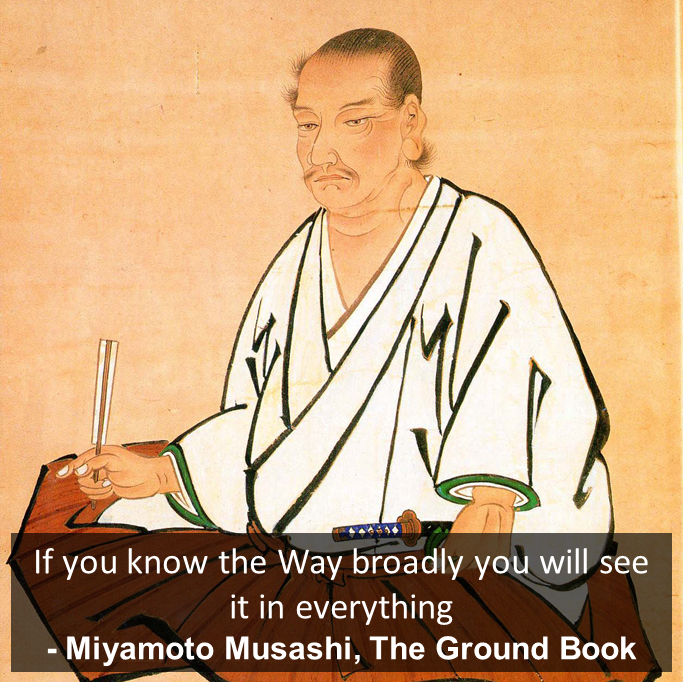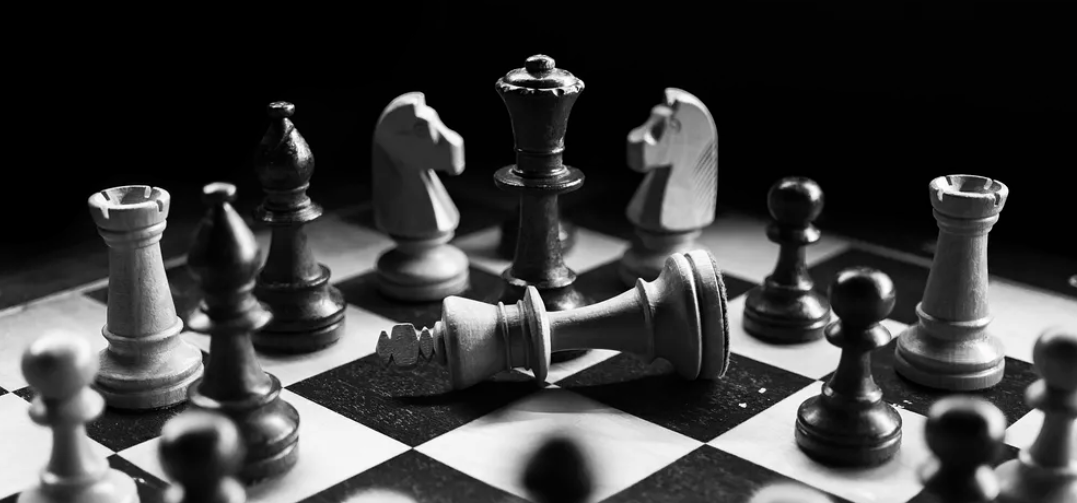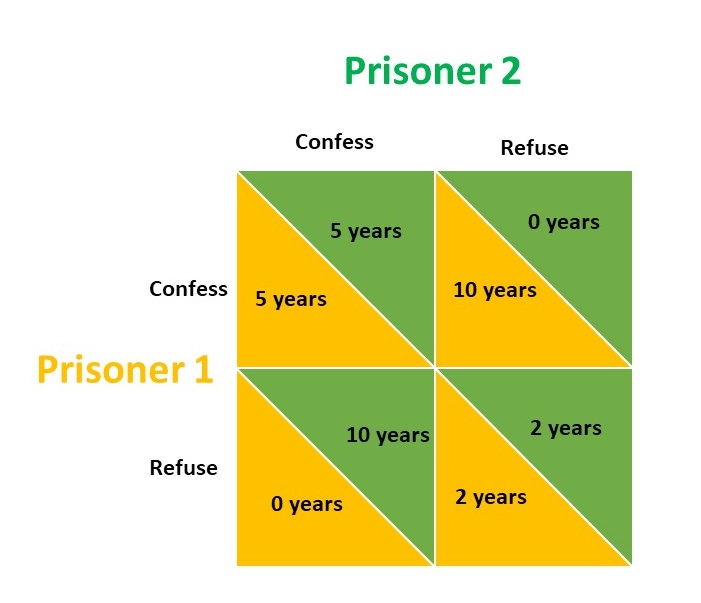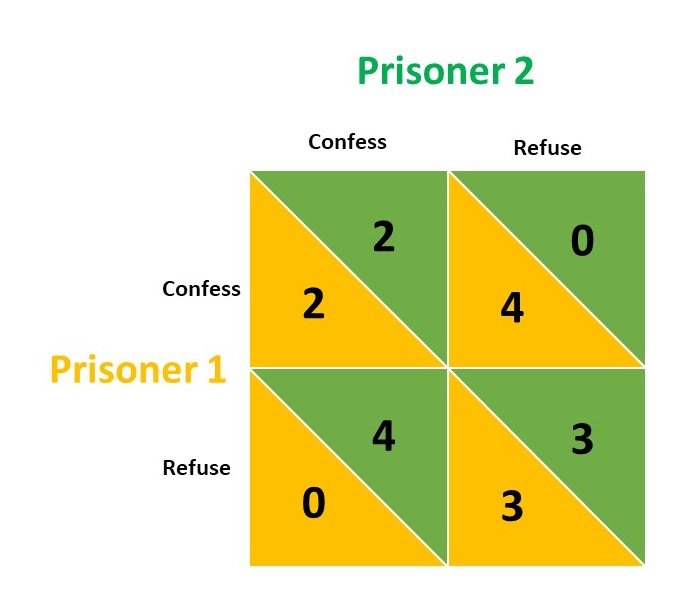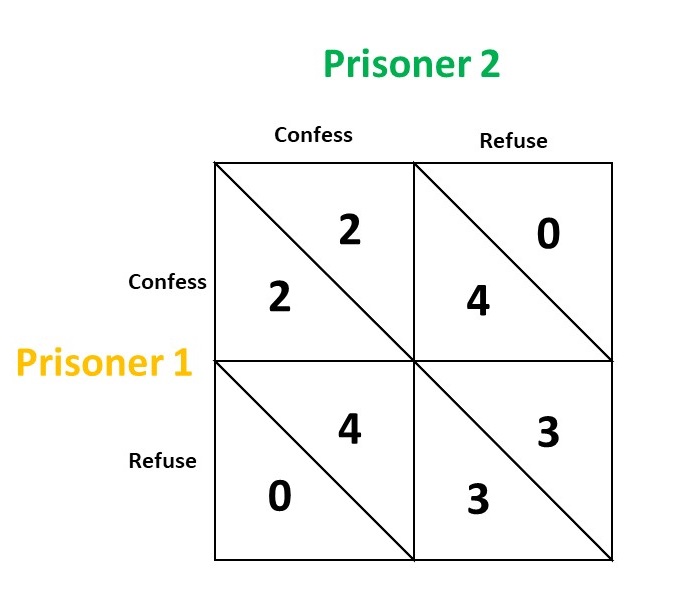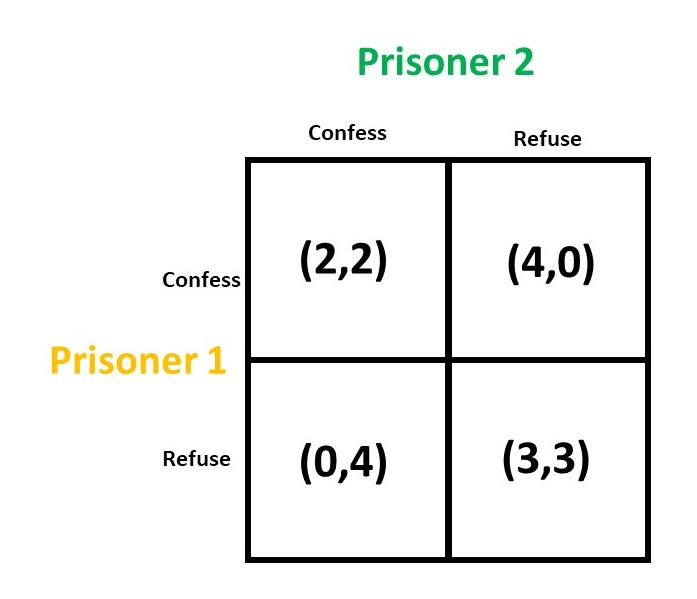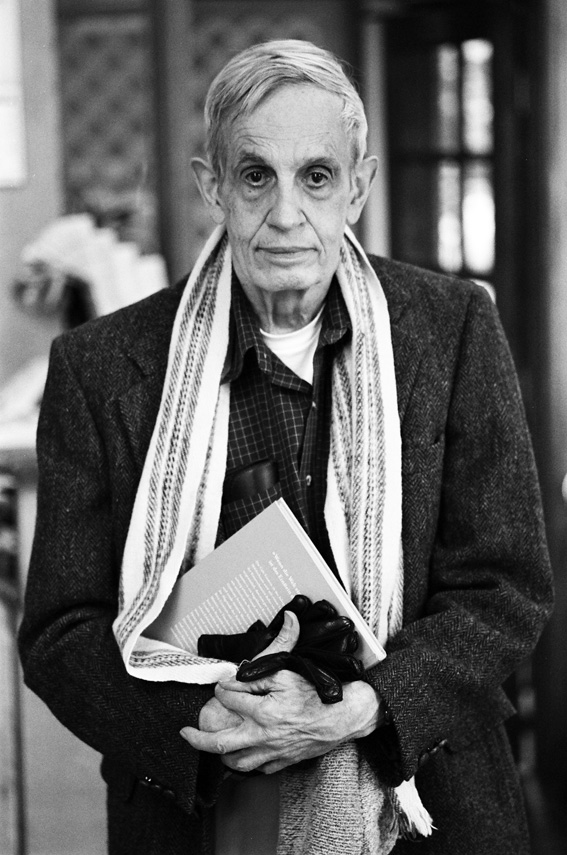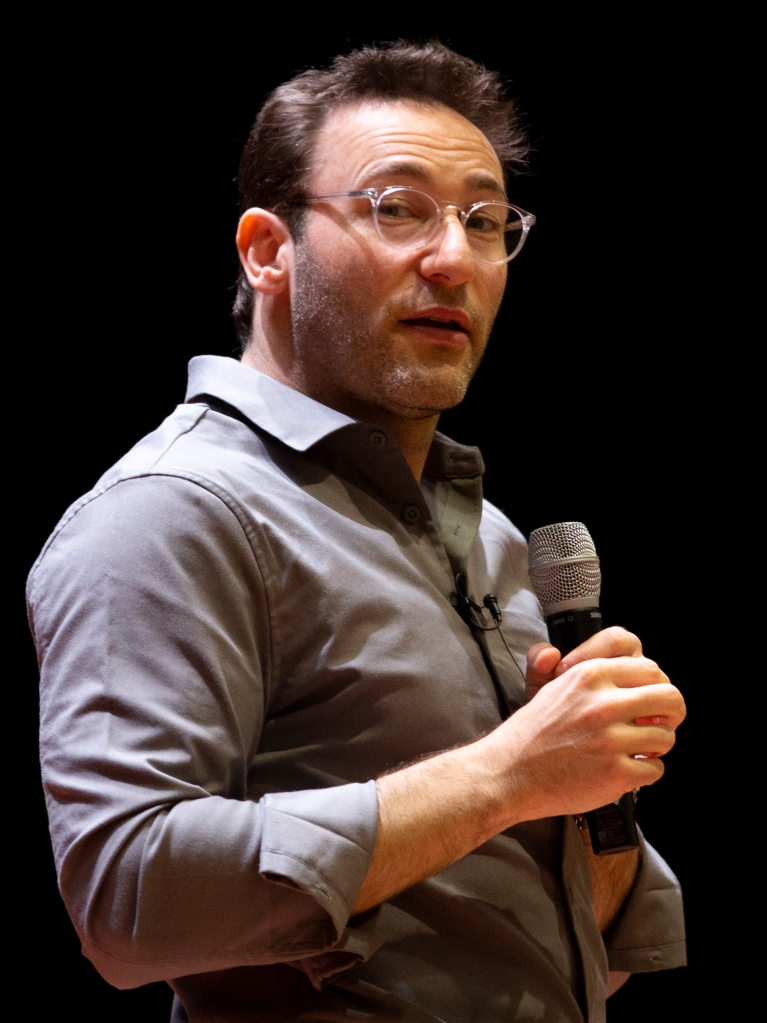Miyamoto Musashi’s philosophy for 21st century
Miyamoto-san in his ‘The Fire Book’ amongst the Book of Five Rings explains in detail about combat and war tactics. We already saw how he explained the importance of fundamentals, importance of managing skills and resources in the Ground Book; the importance of habits, behaviors, small steps and fluidity in the Water Book. The Fire Book explained hereafter is about the fierce attitude of living a life full of challenges. Although, initial reading gives the impression of clear fighting instructions but do not get fooled by the limited words/ sentence choices of Miyamoto Musashi. As he has already explained in the previous books, the reader has to see greater ways in the limited knowledge Miyamoto-san has presented in these books.
As the name goes, it is about keeping that fire of fierceness in you alive until you win your fight. On surface, it may seem like a set of clear instructions to adopt and implement combat and war strategies but it is important to understand that this is the wisdom to win the battle of life, battle of survival which the ultimate fight for every person.
“By using only their fingertips, they only know the benefit of three of the five inches of the wrist.”
Miyamoto-san make the readers aware that how some people think that they can achieve everything when they know some set of the techniques. He wants readers to appreciate the vast expanse and extents of the true wisdom. He expects everyone to not cling to their favorite techniques only. Miyamoto-san thus highlights the fact that one should strive to understand and imbibe anything and everything that is there to know in order to perfect the art of survival. This is only possible when one has urge to deep dive into the things happening around them. Miyamoto-san in some sense, abhors the superficiality of learning process and knowledge involved in it.
“In my strategy, the training for killing enemies is by way of many contests, fighting for survival, discovering the meaning of life, learning the Way of the sword, judging the strength of attacks and understanding the Way of the “edge and the ridge” of the sword.”
There is no single and only way to your goal. Going into the depths of the techniques gives the real advantage over the enemy and also in your own development.
“You cannot profit from small techniques particularly when full armor is worn.”
When you are at some disadvantage, only one technique won’t help. You need to have multiple skill set to confirm your victory.
“Any man who wants to master the essence of my strategy must research this diligently, training morning and evening. Thus, can he polish his skill, become free from self, and realize extraordinary ability. “
Becoming ‘free from self’ actually refers to overcoming the physical limitations one has as a person, as a human being.
Then one by one Miyamoto dives deep into each and every combat technique and explains wherever required. As already seen in his previous books the Ground Book, the Water Book, Miyamoto-san always instructs readers to study and explore the wisdom presented on their own level and words will fail to explain the intricacies of the wisdom.
- Depending on the Place
“Stand in the sun; that is, take up an attitude with the sun behind you. If the situation does not allow this, you must try to keep the sun on your right side. In buildings, you must stand with the entrance behind you or to your right. Make sure that you rear us unobstructed and that there is free space on your left, your right side being occupied with your side attitude. At night, if the enemy can be seen, keep the fire behind you and the entrance to your right and otherwise take up your attitude as above. You must look down on the enemy, and take up you attitude on slightly higher places.“
For what is written here, the idea is to clear the corners while entering any hostile environment. Taking the light source behind gives clear advantage of not getting overwhelmed by the intense light thus immediately giving you an edge over the enemy’s attack. It will be difficult for the enemy to understand your strokes if he is already overwhelmed by the intense light behind you. Furthermore, keeping the dominant side – right side ready for attack with space on the left will help to execute clean cut, clean attack. Keeping entrance to the right will help to counter the surprise attacks. Remaining on the top means always try to have as many as possible updates about the enemy moves. Top location will also help to plan surprise attack on the enemy.
“When the fight comes, always endeavor to chase the enemy around you left side. Chase him towards awkward places and try to keep him with his back to awkward places.”
Keeping enemy on the left will help to strike with dominant hand effectively. Miyamoto-san very smartly instructs to get the enemy in awkward corners where his attacks, blows will definitely fail thereby crushing his confidence.
“In houses chase the enemy into the thresholds, lintels, doors, verandas, pillars and so on, again not letting him see his situation.“
- Three Methods to Forestall the Enemy – 1) Ken No Sen 2) Tai No Sen 3) Tai Tai No Sen
Miyamoto-san very clearly establishes that when you will be in a combat there are only three possibilities. Either you will strike first or your enemy will strike first or you both will strike simultaneously. There is no other possibility. The idea is to forestall – to intentionally slow down and confuse enemy so that he can be dealt with easily. Miyamoto-san focuses on these ideas because one can win quickly by taking the lead. It’s like the first mover’s advantage.
Ken No Sen means to set the enemy up.
- When you attack the enemy first, make sure that you have one more intent to strike next- which is called as ‘reserved spirit’ by Miyamoto-san. Your first strike will be powerful but the next reserved strike will overwhelm your enemy, thereby crushing his confidence.
- Or strike continuously to crush the enemy
- Or strike with a strong intent for once
The idea is to not let the enemy think of attacking you next, to overwhelm him
Tai No Sen means to wait for the initiative i.e., to let the enemy attack first.
- When enemy attacks first, let him think that you are weak. Let him know that you don’t want to pursue this fight. When he becomes sure of such attitude from you then strike strongly on the moment the enemy relaxes
- Or when he attacks at first, counter it with even more strength thereby disturbing his rhythm and crushing his main planned intentions
Tai Tai No Sen means to accompany him and forestall him
- When enemy instantly starts attacking don’t stall in thinking the right attack; just attack strongly and then look out for the weak spot to attack
- Or if enemy is equivalent to you then let go with the flow. Accompany him to understand his movements, timings – float with him. When the rhythm is set then attack him strongly.
The intention to specially focus on these techniques is because, Miyamoto-san thinks that once you forestall the enemy it instantly crushes his spirit thereby making victory quick and possible.
- To Hold Down a Pillow
This means not allowing enemy’s head to rise.
Miyamoto-san establishes that it is bad for you if the enemy leads you, controls your moves. In order to win you must always lead on either side. On one side, you will lead your people to correct moves and on the other side you will lead the enemy by promoting his mistakes.
“The important thing in strategy is to suppress the enemy’s useful actions but allow his useless actions.“
There is one more beautiful line where Miyamoto-san plays the game of words to convey his message to the students.
“The spirit is to check his attack at the syllable “at…,” when he jumps check his jump at the syllable “ju…” and check his cut at “cu…”“
Simply meaning that if you see something wrong happening with you, make sure that you do something before it comes to its fruition, its completion. Try to predict things and get ready to respond at the moment they happen in a combat.
- Crossing at a Ford
Miyamoto-san explicitly wants to give a life lesson here. He used the analogy of the vast sea and one’s journey through it. Even though you have your friends at harbor, even though you are aware of the travel routes, condition of your ship, you should go out to explore the expanses of the sea. The conditions will not be favorable sometimes but you should try to defeat the vastness of the sea to achieve that which nobody has achieved yet.
The vast sea can be easily crossed by crossing area where it narrows the area called “a strait”, “a ford”. “The ford” is the weakest, narrow part of the vast sea.
Similarly, when in combat against a far superior and stronger enemy, don’t focus on his capabilities rather focus on your capabilities and try to cross at his weak point by using your strengths.
“If you succeed in crossing at the best place, you may take your ease. To cross at ford means to attack the enemy’s weak point and to put yourself in an advantageous position.“
- To Know the Times
The idea is to understand the mentality, the nature, the habits or the way of thinking of the enemy and his people. When you will understand how the enemy involuntarily behaves, responds, then it becomes very easy for you to gain the advantage of the predictability.
Even in duels Miyamoto-san urges to identify the fighting style of the opponent during the act of forestalling. Once his school of style is known, you can easily take over on his weaknesses. The nature or the habits of the enemy are the involuntary clue that even the enemy himself cannot control and they are the mirrors of his intentions, so the idea is to understand his intentions, find weak spots in them and attack there.
“If you are thoroughly conversant with strategy, you will recognize the enemy’s intentions and thus have many opportunities to win.”
- To Tread Down the Sword
“The spirit is to attack quickly while the enemy is still shooting with bows and guns.”
Miyamoto-san very cleverly gives a warfare strategy here. When the opponent first attacks with the bows and arrows or with the guns and cannons, you should not waste your time in drawing the arrows or filling the barrels with gun powder to counterattack. Instead, you should react instantly treading down i.e., use your brute force to avoid your confidence from going down. If you waste your time in drawing the arrows and filing the barrels, most of the damage would already weaken you in the process. Treading down means using the swift reacting forces, you have to not let enemy come up with second attack. If he is unable to come up with second attack then definitely, he will count his first successful attack only as a lucky one and will start doubting himself already.
“You must achieve the spirit of not allowing the enemy to attack the second time this is the spirit of forestalling in every sense once at the enemy you should not aspire just to strike him but to cling after the attack.”
- To Know “Collapse”
“Everything can collapse – houses bodies and enemies collapse when their rhythm becomes deranged.”
The idea is to spot the chaos among the enemy and let that chaos increase further to defeat him without investing many resources and efforts.
“Fix your eye on the enemy’s collapse and chase him attacking so that you do not let him recover.”
- To Become the Enemy
Becoming the enemy is not only about thinking the way enemy thinks. Miyamoto-san wants the students to understand that if you see yourself as something you become that thing. So even if the enemy is practically strong and if you let yourself convince that you cannot defeat him then, surely you won’t be able to defeat him.

So, it is about your mindset to defeat the enemy.
“He who is shut inside is a peasant, he enters to arrest is a hawk.”
It is also one way to say that any type of confidence is good confidence in modern and more relevant sense.
“In large-scale strategy, people are always under the impression that the enemy is strong so tend to become cautious. But if you have good soldiers, and if you understand the principles of strategy, and if you know how to beat the enemy, there is nothing to worry about.”
Becoming the enemy is about considering the whole world against ourselves and then using all that you have to win over the world. It is a strong personal advice from Miyamoto-san.
“If you think here is a master of the way who knows the principles of strategy then you will surely lose.”
- To Release Four Hands
“To release 4 hands is used when you and the enemy are contending with the same spirit and the issue cannot be decided abandon the spirit and win through an alternative resource.”
When you realize that the enemy you are fighting is exactly you or equivalent of you then think out of the box. Do things which you won’t do normally. Such abnormal and creative ways of attacks will break the rhythm of your equivalent enemy.
“Immediately throw away the spirit and win with the technique the enemy does not expect.”
So, “releasing four hands” is the indication to create some unfair advantage through unconventional practices.
“We must defeat the enemy by changing our mind and applying a suitable technique according to his condition.”
- To Move the Shade
“When you cannot see the enemy’s position, indicate that you are about to attack strongly to discover his resources. It is easy then to defeat him with a different method once you see his resources.”
This is one cunning and smart advice by Miyamoto-san. When you are unable to gauge the moves of the enemy or the enemy himself doesn’t want to leave any traces, you should create some fake opportunities of victory for the enemy so that he will expose all his capabilities to you. Once he is lured into such fake victories then you can gauge the strategies and plan a worthy surprise counterattack secretly.
- To Hold Down a Shadow
“When the enemy embarks on an attack, if you make a show of strongly suppressing his technique, he will change his mind. Then altering your spirit, defeat him by forestalling him with a Void spirit.“
The idea is to embarrass the enemy if you are going for a strong counterattack. This saves you resources in next attack because the enemy would never come out to counterattack because of the embarrassment.
- To Pass On
Miyamoto-san makes a very smart observation on some involuntary human habits like sleepiness, yawning. These can be passed on human to human. Even today’s neuroscience agrees that these are the habits which are easy to pass on because of the herd mentality, group behavior of humans.
Miyamoto-san advises as follows:
“Make a show of complete calmness and the enemy will be taken by this and will become relaxed when you see that this. Has been passed on you can bring about the enemies defeat by attacking strongly with a Void spirit.“
The idea is to pass on your careless, weak attitude on the surface to your enemy and once he is relaxed the bring out you real fierce attacking inner spirit to defeat him.
- To Cause the Loss of Balance
“Without allowing him space for breath to recover from the fluctuation of spirit you must grasp the opportunity to win.”
In simple words, not giving an opportunity to recover the enemy from last attack. The enemy can be made to lose his balance by bringing in danger, creating difficulties and bringing in the surprise. Miyamoto-san speaks here very clearly as an experienced and seasoned teacher.
- To Frighten
“Fright often occurs, caused by the unexpected.”
Miyamoto-san knows very well about the basic human mentality. We don’t like uncomfortable situations. The enemy’s confidence, spirit can be easily crushed by making him uncomfortable, by scaring him. Scary, unnerving, unsettling and panicky battle cries/ battle drums/ battle horns are one great example of that.
- To Soak In
“When you have come to grips and are striving together with the enemy and you realize that you cannot advance you soak in and become one with the enemy.“
It is simply remaining in touch with the enemy to understand his moves. The moment you draw apart from your enemy, you will lose the advantage of the predictability.
- To Injure the Corners
“It is difficult to move strong things by pushing directly so you should injure the corners.”
When the enemy is big in size and strength, the best way to start is to injure his corners as in his extended and weak parts. Once you bring down his morale then, even the big things will collapse down.
“In large-scale strategy it is beneficial to strike at the corners of the enemy’s force”
In the same sense if the opponent has strong army, start attacks from the most beneficial and weak spots, facing the initial defeats from such “corners” can bring down the spirit of the remaining strong forces.
- To Throw in Confusion
“Victory is certain when the enemy is caught up in a rhythm which confuses his spirit“
Creating confusion is all about not letting enemy think that he has understood you. When he will be confused about your intentions, he will be less focused and then it will be easy to take him down. Miyamoto-san smartly establishes this idea for both one on one combat and a large-scale war.
“Feint a trust or cut or make the enemy think you are going to close with him and when he is confused you can easily win.“
- The Three Shouts
Earlier Miyamoto-san suggested to scare the enemy with voices. He again highlights how voice can be incorporated into the fights to create rhythm. He divides the shouts in three seemingly obvious but smart by implementations as shouts before, during and after.
“The voice shows energy“
The attitude you want to present to the enemy can be easily demonstrated to the enemy simply just by your shouts instead of deploying valuable assets and resources into the battle or fights.
Shouting before the fight creates the rhythm, shouting during the battle in low pitch projects the effectiveness of our attack and the shouting at the end of the war can build instant morale boost and an escalating defeat of the enemy due to downgrading spirit.
- To Mingle
Mingling is all about sticking and advancing into the enemy forces. If you are continuously stuck with the enemy forces and see that they are defeated at certain position then you attack their remaining sides with same strength thereby making space to advance through them. Once you see crushing at a location you build upon that to advance ahead.
“What is meant by mingling if the spirit of advancing and becoming engaged with the enemy and not withdrawing even one step.“
- To Crush
Crushing is all about not giving even single opportunity to the enemy to recover from the last attack. When you sense his ultimate weakness getting exposed then crushing will ensure the last blow to get the victory in the battle.
“When we see that enemy has few men or if he has many men but his spirit is weak and disordered, we knock the hat over his eyes crushing him utterly. If we crush lightly, he may recover.”
- The Mountain-Sea Change
“The mountain sea spirit means that it is bad to repeat the same thing several times when fighting the enemy there may be not hell but to do something twice but do not try it a third time.”
Miyamoto-san knows that every person, every fighter has preferences, comfortable, favorite moves. Playing such moves again and again can make the person predictable thereby vulnerable. He thus wants the warrior to demonstrate the spectrum of moves, moves of contradictions to effectively confuse the enemy.
“If the enemy thinks of mountains attack like the sea and if he thinks of a sea attack like the mountains.”
- To Penetrate the Depths
“If his spirit is not extinguished, he may be beaten superficially yet undefeated in spirit deeps inside.“
Miyamoto-san very well knows the psychology of revenge and coming back with more preparedness to avenge the last fight. Thus, he wants the warrior to not only physically defeat the enemy but also to defeat them in their minds.
“Penetrating the depths means penetrating with the long sword penetrating with the body and penetrating with the spirit.”
This shows how Miyamoto-san is serious about the mindset of warrior. He knows that you can easily defeat an enemy physically but if he is not defeated in his mind then surely, he will rise up again with possibly stronger counterattack.
“If the enemy remains spirited it is difficult to crush him.“
- To Renew
““To renew” applies when we are fighting with the enemy and entangled spirit arises where there is no possible resolution, we must abandon our efforts, think of the situation in a fresh spirit then win the new rhythm.”
A great teacher with strongest techniques knows that there will be chances when his pupils may stand against each other. There may be chances when exactly same great techniques will be presented in front of each other. The great and smart teacher knows that such tie-making conditions will require new ways, new perspectives of thinking.
In simple words, when one feels stuck in repetition, the best way to solve such problems is to start from something new, unconventional and out of the box ideas.
This also shows how Miyamoto-san was open to accepting the idea that even his fool-proof, seasoned techniques will sometimes be challenged with equally potent different techniques. Thus, he demands creative thinking while solving such issues which is really smart for the times and personality he was.
- Rat’s Head, Ox’s Neck
This is about leveraging the small details to bigger advantages in warfare. History has many examples where even a seemingly small thing changes the bigger course of the warfare, battles. Miyamoto-san here, similarly expects a warrior, a strategist to think with the ability of Rat to see at small levels and use that detail to strike back with the power of the Ox’s neck. One has to appreciate how Miyaomoto-san has distilled small-small details of everyday observations into his nectar of war strategies.
“Whenever we have become preoccupied with small detail, we must suddenly change into a large spirit, interchanging large with small.“
- The Commander Knows the Troops
“Using the wisdom of strategy, think of the enemy as your own troops.“
Miyamoto-san explains this idea in very few words, because he wants this idea to be understood only by those people who actually have grasped the thought process behind his Way of Strategy. Miyamoto-san implies here that if you understand the troops of the enemies well, then you can direct those troops in your ways thereby saving your resources. The various ideas explained before in the Fire Book relate to the human tendencies, psyche, group dynamics, group behavior. Using this knowledge if one becomes successful in understanding the mindset of his enemy troops, then is is impossible to defeat him.
- To Let Go the Hilt
“There is the spirit of winning without a sword. There is also the spirit of holding the long sword but not winning.“
Hilt means the handle – the grip of the weapon. Here again Miyamoto-san is limiting his words but the message to be conveyed is precise. He implies that having the greatest weapon in your hands does not guarantee absolute victory. You can win the fight without the weapon too. It is all about the mindset. If you have that mindset of the fierceness of the fire in your fights then, it is nearly impossible to defeat you. Don’t become too much attached to your lavish, expensive, sophisticated equipment and tools. Understand that you can be easily defeated in exceptions when you won’t have these tools. So, accept that in order to win – sometimes you may have to let go of your priced possessions. It should be always you deciding the fate of your battles and not the tools, weapons that you use to win those battles. Detachments from such tools will bring out the real fighter within you.
- The Body of a Rock
The body of rock is implied to the feeling of not getting disturbed by what is happening around you. This mindset will not only defeat one on one enemy but will also build the attitude of fierce fire when the warrior will face thousands of enemies alone. Again, it is all about mindset.
Conclusion
Miyamoto-san in the Fire Book gives almost 27 techniques to win in a one-to-one combat, in a battle or in a long-term, large scale warfare. The consistencies of these techniques and ideas with some real-world examples and practical advises show the true scholar of Miyamoto-san.
Creating breathing space to fight aggressively, rising on the top locations in the battle places, to engulf the enemy even from small advantages, to have the ability to spread swiftly and influence immediately, to have the ability to begin again even from a small spark or embers, to remain unpredictable, to remain attached to the enemy are the tendencies of the fire. These minute behaviors of the fire are closely studied and imbibed into the real life by Miyamoto Musashi, they are the key to the Fire Book.
You must understand why this section is called the Fire Book. Obviously as the name goes the techniques are built around the behavior of the Fire. The important thing is that everyone would have seen a fire many times in their lives but it is the observant and thoughtful mind of the warrior like Miyamoto-san who extracted the wisdom of Combat and warfare from the Fire. Please bear in mind that these tactics are still relevant in modern warfare and battle strategies.
“Of course, men who study in this way thing that they are training the body and spirit, but it is an obstacle to true Way, and its bad influence remains forever. Thus, the true way of strategy is becoming decadent and dying out.“
Thus, the Fire Book is about the grit, the perseverance in fighting and winning the greatest battle – the battle of life, the battle of survival.
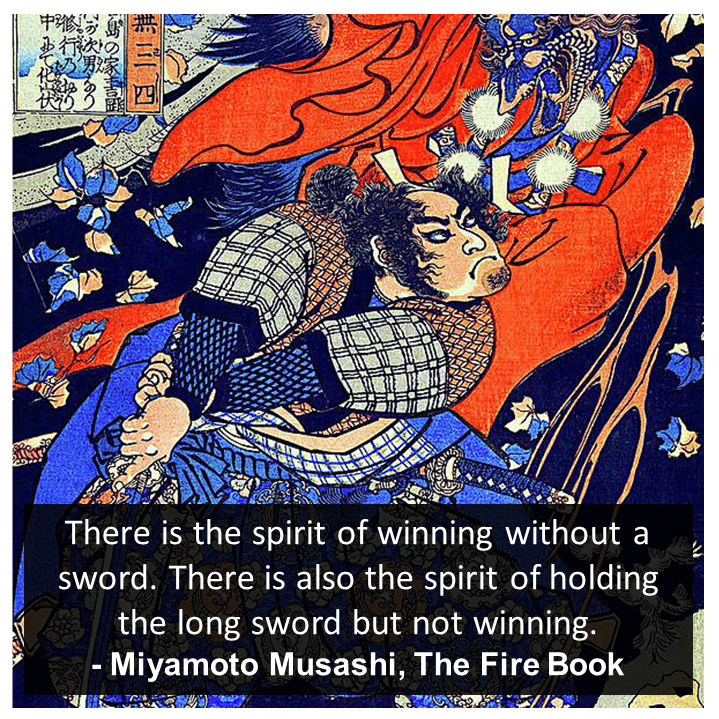
Links for further reading:


